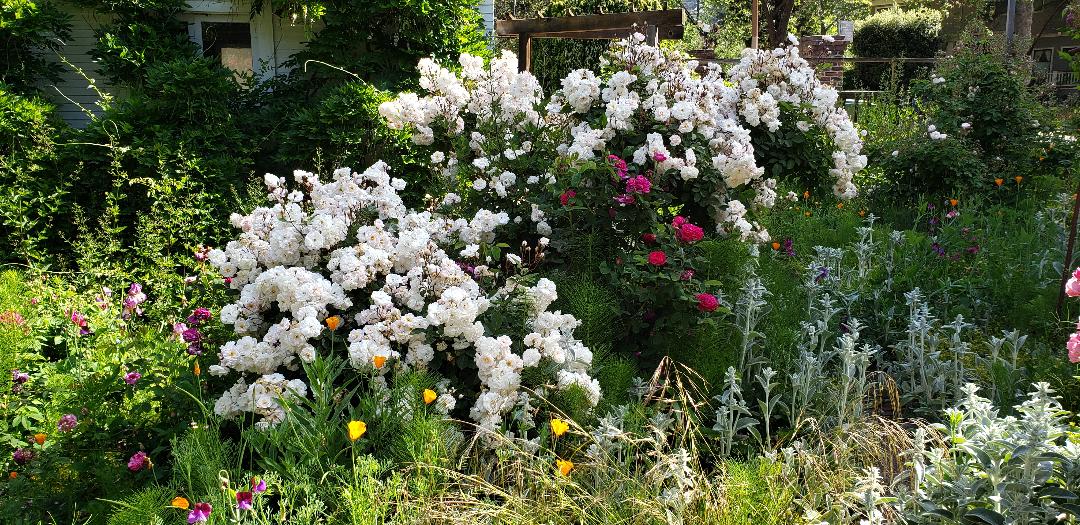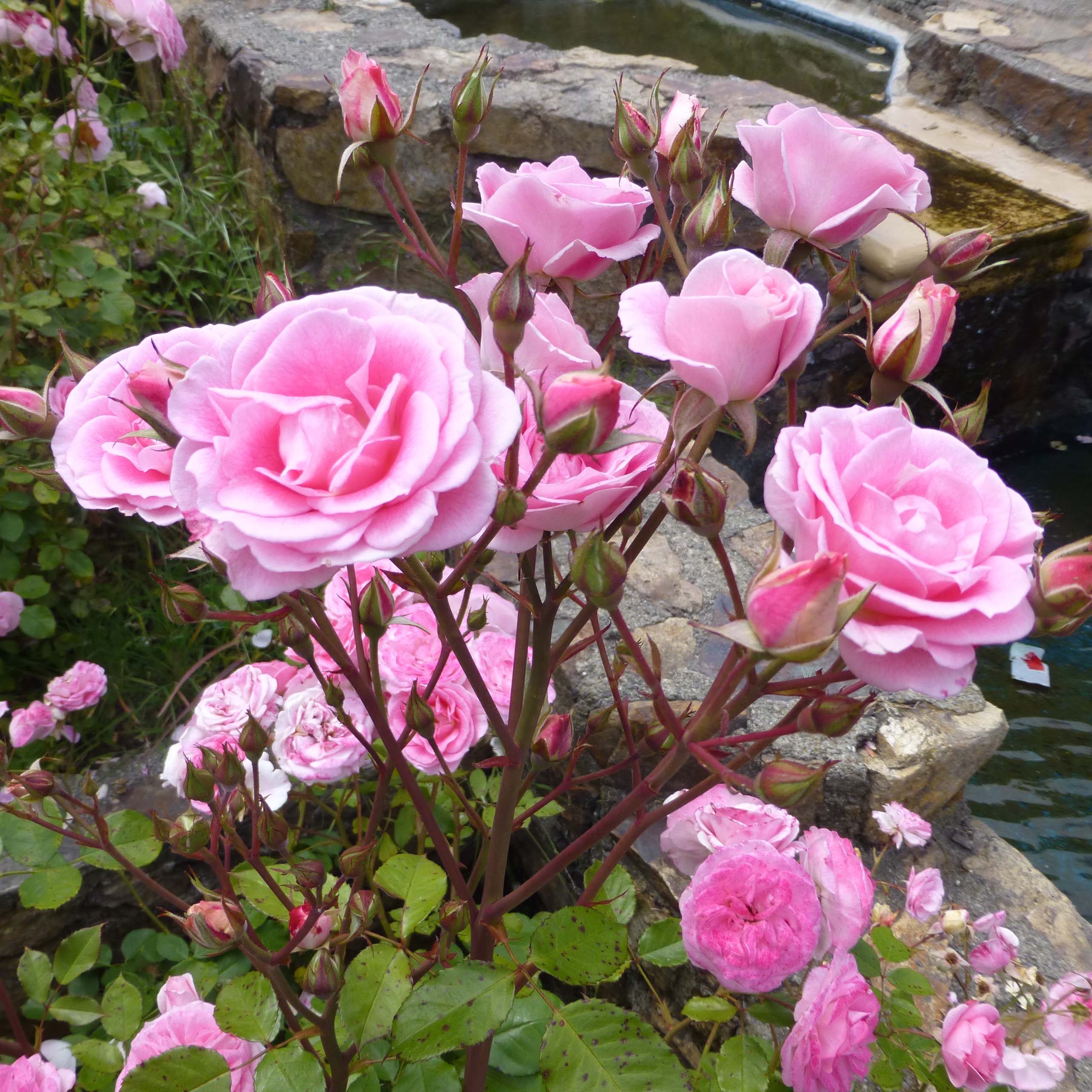A Lazyperson’s Guide to Growing Good Roses
By Marty Nemko, Ph.D.
Author & Rose Hybridizer
If you’re looking for maximum pleasure with minimum sweat, consider these varieties. They are rewarding without having to spray and are available in local nurseries and/or Home Depot. If you prefer to buy online, a link is included for each variety. Unless otherwise noted, the flowers have that classic rose shapeliness and the bushes get three to five feet tall. A variety may be available locally; a link to a commercial online source is shown.
Full List
Another good resource for rose information is:
helpmefind.com
Purists may sniff but this works!
- Choose a sunny location.
- Dig a hole that’s roughly 18” deep and wide.
- Drop a shovelful of some compost into the bottom of the hole and mix it in. Also add ¼ compost to the soil you’ve removed and will then put back as your rose’s home.
- Plant the rose so the top roots are barely covered. If needed, trim the canes (branches) so only the few sturdiest are left, each 4 to 6 inches tall.
- Keep it well watered. It’s time to water when you put your finger an inch down and it’s dry. Or if you have an automatic watering system ($1 Shrubbler heads work well), every two or three days will work unless it’s 90+ degrees whereupon a daily soak is advisable.
- After the first bloom, mix a scant handful of Osmocote (or general purpose or lawn fertilizer will do) in a one-inch band about a foot from the plant’s center.
- Cut blooms both for enjoyment and to encourage re-bloom.
- In January, cut back the bush by roughly half. The next March, feed again with six-month Osmocote. If you’re not using a time-released fertilizer, it’s best to fertilize around St. Patrick’s Day, Memorial Day, July 4, and Labor Day.
- Enjoy!
Marty’s Container Tips
Want to plant in a pot? Size matters. Minis like you get in the supermarket could be happy in a mere 6” pot. Big ‘uns like hybrid teas need a 12-incher or even half-barrel. To keep from having to water too often, if you don’t have an automatic watering system, plant in this mix: half with widely available Miracle-Gro Moisture Control potting mix and the other half with the clayey soil we mostly have here in the East Bay. Feed using six-or eight-month Osmocote and the frequent watering will keep it better fed than in the ground.



